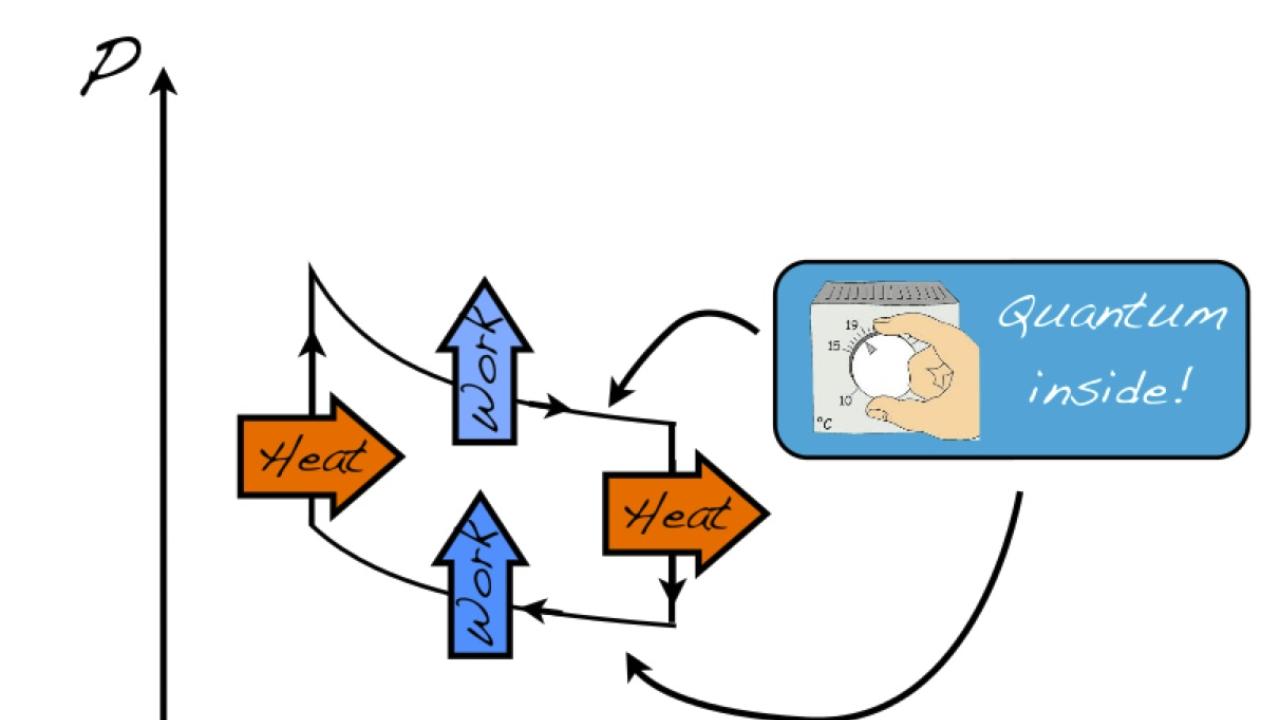
What would happen if you shrunk your car engine to the size of a single atom? Surprisingly, it might be a lot more efficient than it is now.
Real-world engines have to trade off between efficiency--how well they convert heat into work--and power, how quickly they accomplish this conversion. Generally, the more powerful an engine is (the faster it moves), the less efficient it is because it creates more friction. For this reason cars need oil! But using some quantum mechanical trickery, ICTP postdoctoral researcher John Goold and his collaborators seem to have found a way around this limitation for atom-sized engines, as they describe in a new paper in Nature Scientific Reports.
"In this case, it seems that you can in principle get power at maximal efficiency, which challenges the mainstream understanding of how real engines work," Goold said.
The thought experiment by Goold and his collaborators tries to reconcile thermodynamics, which governs the interchange of heat and work for a wealth of objects large enough for us to see, "from refrigerators to black holes," Goold said, with quantum mechanics, which usually only operates at microscopic scales.
"As we push technology towards nanoscale and beyond, at some point you reach the verge of the quantum domain," Goold said. "And then you need to build a theory of thermodynamics which is applicable at the quantum scale...to what extent concepts like heat and work carry over to the quantum machine is not very clear."
In the paper, the researchers used quantum mechanics to analyse an engine cycle known as the Otto cycle, well-known to engineers as the same process that drives a typical car engine. The Otto cycle has four basic elements: two steps which heat or cool, and two which compress or expand. Changes in temperature and volume work as well at the quantum, atomic scale as they do for a real-life piston. Starting in a cold bath, the atomic piston compresses, just like a car piston would. After compression, the atom is plunged in a hot bath - analogous to the addition of gasoline and ignition in a car engine. Next, the system expands, before reverting to the cold bath at the beginning of the cycle.
Unlike a conventional piston, though, an atom undergoing this cycle can do so without losing efficiency to friction. This is due to recently discovered quantum engineering techniques. Goold hopes this surprising finding will one day help engineers building tiny engines to make their machines as efficient as possible.
No one has made an atom-sized engine yet, Goold admitted, but he said they're getting there. The smallest current engine is about a micrometer, about 10,000 times larger than an atom. "But you wonder what is the limit ?," Goold said.
He wants to be ready when it does. "As of yet, it's not very clear in the field what are the intrinsic quantum mechanical advantages. This is one definite direction: it seems that hyperefficiency at finite power is possible," Goold said.
Working together with an expert on quantum mechanical tricks, Dr. Adolfo Del Campo, from Los Alamos National Laboratory in the US and Prof. Mauro Paternostro, a specialist on quantum optics from Queen's University Belfast, Goold contributed his knowledge from his studies of the interface between thermodynamics and quantum mechanics. "What really fascinates me is how you can reconcile the two theories, particularly what are the intrinsic thermodynamical advantages of having underlying quantumness," Goold said.
Goold and collaborators are currently negotiating with experimental teams to test this theoretical work experimentally, using lasers to trap a single atom and carry out the temperature and pressure changes of the Otto cycle. "I think it's definitely within the grasp of current technology and is on the agenda of several European experimental teams," Goold said. "The next step is to try to get someone to do it."
The paper can be downloaded at the following URL: http://www.nature.com/srep/2014/140828/srep06208/full/srep06208.html
















